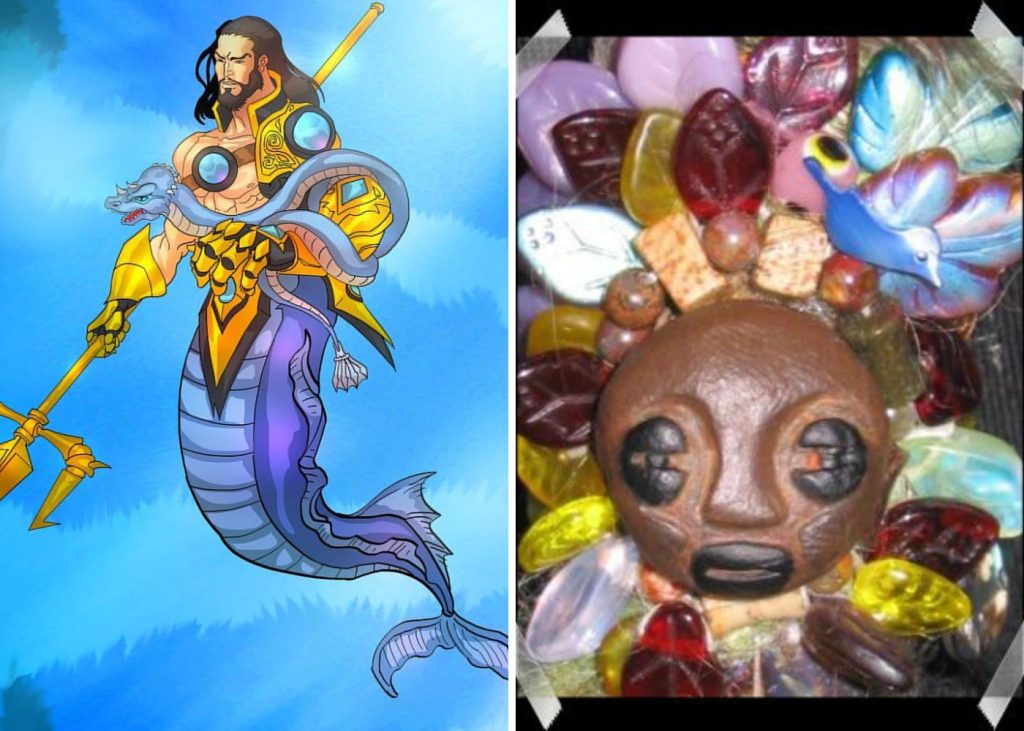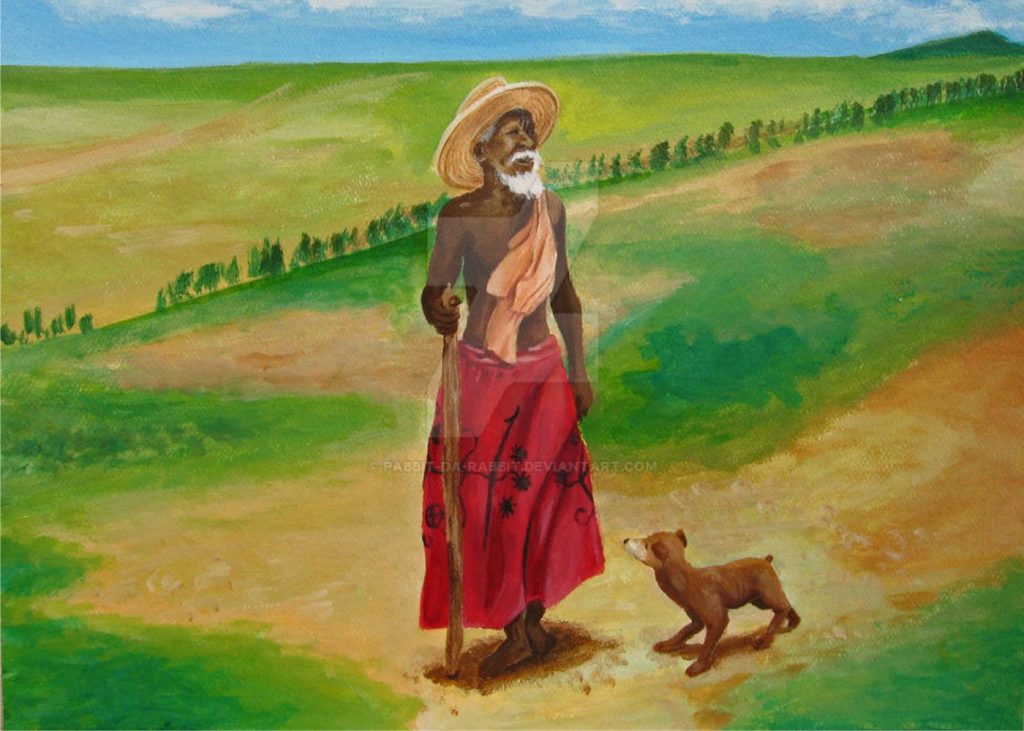The Vodou religion (sometimes written Voodoo or Vodun) combines elements of West African religion, Roman Catholicism, and indigenous religions from other tribes. Popular Voodoo symbols include Agwe, Gran Bwa, Papa Legba, Damballah-Wedo, Voodoo dolls, and more.
What is Haitian Voodoo?
Present-day practitioners live in Haiti and the Caribbean, and other areas that share an African cultural history. Voodoo practitioners acknowledge one creator, God, but also believe in a vast pantheon of spirits known as Lwa or Loa.
A wide variety of names exist for these spirits, and each has an identifying symbol. During rituals, a priest draws vèvè symbols on the ground to represent them. The followers then pray for each other’s well-being, safety, and good fortune.
The lore behind each Loa varies from community to community, as do the aesthetics of the vèvè. People who believe in them attribute various characteristics to the many spirits since they all link with humankind.
What Are Voodoo Symbols?
There are many voodoo symbols. Some of the most popular ones are listed below.
Agwe
Agwe is a water spirit called the Tadpole of the Pond and the Shell of the Sea. People believe that he owns the sea and everything that lives in it.
Agwe is the patron saint of sailors and fishermen. He is also the traditional protector of Haiti, an island country where people have always relied on the sea.
Most of the time, he is shown as a mulatto man with green eyes and fair skin and wearing a navy uniform. His Vodou symbol is a ship or boat.
Practitioners usually conduct these rituals near the water, like the sea, a lake, or a river. He is like St. Ulrich, and followers typically depict him with a fish in his hand.

Gran Bwa
Gran Bwa is the spirit of all the leaves, trees, and wild forest. A vèvè of a blocky person shows him with a face in the shape of a heart.
His name means big tree or great wood, and he worships the mapou, also called silk cotton tree. He protects and watches over the ancestors and connects them to healing, secrets, and magic.
Gran Bwa, also called Gran Bois, is said to have a big heart, loving, and be easy to approach. During initiation ceremonies, this Loa is often called on, and St. Sebastian, tied to a tree and killed with arrows, is connected to him.
Papa Legba
Papa Legba, also known as the Guardian of the Crossroads and the Old Man, is one of the most revered deities in Haitian folklore. He is revered at the outset of any ritual because devotees think he is the link between people and the Loa.
The cross, which represents both the spiritual and the material, is his emblem. He also serves as a guardian spirit, watching over sacred sites and private residences.
Most depictions of Papa Legba feature an older man toting a bag (sac paille). St. Lazarus is sometimes depicted as he walks down the street, aided by a cane.
He is also linked to St. Peter, the apostle who possesses the heavenly keys. His name is invoked in many chants and songs around Haiti, hoping he’ll let them pass through the gates and meet other spirits.

Damballah-Wedo
The Danbala-Wedo, also known as Damballah, is a powerful fatherly character and one of the most influential deities in the Loa pantheon.
Even the other Loa hold him in the highest regard. Good fortune, peace, and health are all attributed to him. A brilliant green or white python is his Vodou sign because it exemplifies his slow-moving but loving personality.
Even though various depictions of Danbala-Wedo in legends don’t resemble the saint, he is commonly identified with St. Patrick since he exterminated the snakes in Ireland.
Many couples seek his blessing before tying the knot since he is believed to bring about mutual respect and unity in the relationship. Worshiping him is identical to worshipping the natural world.
Baron Samedi
Baron Samedi, also comprehended as the Lord of the Cemetery, is the Loa of the Dead and controls passage to the Underworld.
Artists portray him clad in black and holding skulls, bones, and other death emblems. His Vodou sign is highly complex, with cemetery crosses and coffins, as he is said to sit on a cross-adorned throne.
Baron Samedi is also linked to life, fertility, and sexual rejuvenation. He is considered to be able to predict when someone’s life will end. It is also believed that he wants children to live their entire lives before entering the Underworld.
For these reasons, he is solicited for assistance in conception and protecting children’s lives.

What are some other symbols and practices in Voodoo?
Voodoo doll
Voodoo dolls are used to focus on intention and direct spiritual energy to bring about desired outcomes or to influence the actions of others. The use of voodoo dolls as a symbol is often associated with negative connotations, such as the belief that they can be used to harm or control others.
However, in the context of Voodoo, dolls are typically used for positive purposes, such as healing, protection, and bringing good luck.
Voodoo dolls are often used in rituals and ceremonies. They may be dressed or adorned with items such as beads, feathers, and other symbolic objects.
They may also be inscribed with symbols or words believed to have spiritual power. The symbolism of voodoo dolls is tied to the belief in the power of intention and the ability to harness spiritual energy to bring about positive change.
Ezili Freda
Ezili Freda, the Loa of femininity and love, is depicted as a lovely light-skinned woman. She is connected with womanhood in terms of desire and sexuality.
She is described as generous but can also be nasty and capricious. Her vèvè is centered on a heart, representing her duty as a Loa.

For more on mysterious symbolism, check out this great article on the triple moon symbol.

